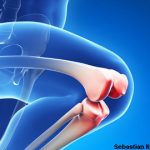Compared with participants reporting no knee instability six months after surgery, the study found, “participants retaining instability in the operated knee at six months after surgery had significantly more knee pain and activity limitation, reduced lower-limb power, increased 50 foot walk time and reduced knee extensor strength.”
In the analysis, the stair-climb power test, which had higher demands on the knee and muscles, was the only physical performance measure to demonstrate an independent predictor for retaining knee instability. “Interestingly, the more functional test of lower-limb muscle power (i.e., stair-climbing power) did differ between our groups with and without knee instability,” write the authors. “No previous studies have assessed the role of muscle power in knee stability.”
Additionally, researchers cite comorbidities as a factor in “the cycle of inactivity and physical deconditioning, limiting optimal outcomes post surgery” for this patient group.
For pain evaluation, participants who continued to have knee instability reported greater preoperative and post-operative pain at six weeks and six months compared with other study participants. The mean difference was clinically meaningful, with 2.1 out of 20 for pain and 7.4 out of 68 for self-reported physical function on the WOMAC index.
“Screening for the presence of self-reported knee instability should be conducted prior to [total knee replacement] surgery and monitored throughout the post-surgery rehabilitation period,” write the authors. They conclude their study by calling for more research on specific interventions that will effectively address lower-extremity muscle strength and knee pain to minimize the effects of self-reported knee instability on patients after surgery.
Fleeton G, Harmer AR, Nairn L, et al. Self-reported knee instability before and after total knee replacement surgery. Arthritis Care Res (Hoboken). 2016 Mar 24. doi: 10.1002/acr.22692. [Epub ahead of print]

